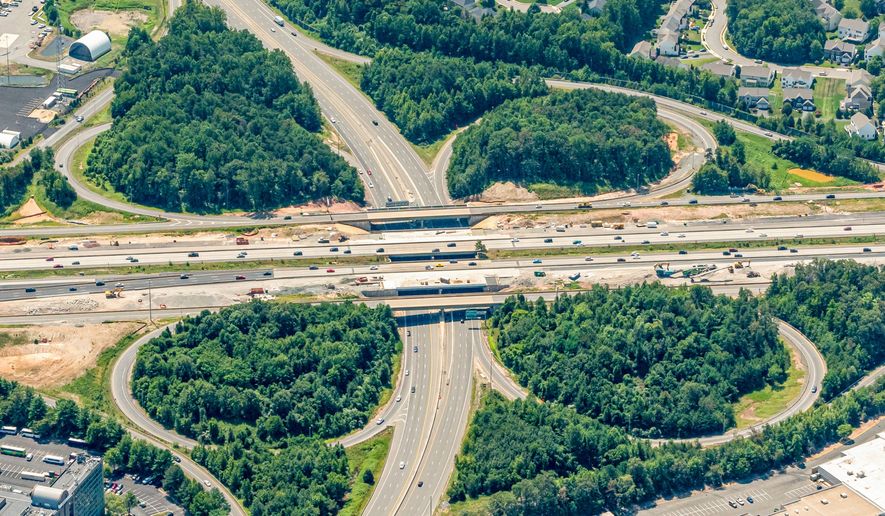OPINION:
The impact of rising inflation is all around us. Americans are paying more for everyday goods and services and making difficult decisions about household and business budgets.
Long-term investments like those for major infrastructure development are similarly not immune from the effects of persistent inflation. Price increases for material drive up a project’s expense, and even the most routine repair or upgrade costs more, no matter the location or how diligent planners plan.
Unfortunately, it appears we can expect the same for projects to be developed under the long-sought and hard-won Infrastructure Investment and Jobs Act (IIJA). Inflation has driven up the cost of material and disrupted supply chains to such an extent that this new legislative investment may not have the impact originally anticipated.
As Jeff Davis, a Senior Fellow at the Eno Center for Transportation, recently noted: “If sustained highway cost inflation averages any higher than 7% per year, then inflation will have eaten the entire IIJA spending increase.” As of June 2022, highway cost inflation totaled approximately 14.2% per year.
And yet, despite these difficult times spanning a global pandemic, supply chain disruptions and inflationary challenges, the largest surface transportation project of its kind this century will open on-time this year. Thanks to a public-private partnership and a $3.7 billion investment by the private sector, the Transform 66 Outside the Beltway project will bring an innovative new approach to transportation along the 22.5-mile corridor from just outside Washington D.C., to U.S. Route 29 in Virginia.
Public-private-partnerships (P3s) align the interests of the public and private sectors to solve the most complicated of infrastructure needs for all citizens. P3s provide additional tools to build needed projects by placing traditional taxpayer construction risks associated with large-scale infrastructure projects on the shoulders of the private sector.
In the case of the I-66 corridor, a competitive procurement process led by the Commonwealth enabled Cintra, the project’s lead developer, to help save taxpayers $1 billion compared to earlier proposals received by the Commonwealth.
“This historic multi-billion-dollar private sector investment in our nation’s infrastructure is the result of visionary state and local leaders who took on a challenge to maximize public infrastructure creation while reducing traditional taxpayer burdens,” stated former U.S. Secretary of Transportation Mary Peters. “From transit to bike trails to new autonomous vehicle technology, the Transform 66 Outside the Beltway Project is nothing short of a model for the country.”
“States need stable investment to deliver needed infrastructure projects across the country,” said Bob Poole, transportation advisor to multiple administrations and current Director of Transportation Policy at the Reason Foundation.
“Instead of emptying federal coffers and spending hard earned tax dollars, state and local governments have the option to turn to the private sector for collaborative assistance. Why should the state assume large quantities of risk when the burden can be willingly carried by the private sector?” added Poole.
The improved I-66 corridor features multi-modal transportation components, connecting surrounding communities and providing residents and visitors with choice in how they travel, whether it be to commute to work or visit a nearby neighbor. As part of the agreement with the Commonwealth, beyond funding the construction costs of the project, Cintra and its partners provided an additional payment of $579 million in transportation improvements for the region. This included funding park-n-ride facilities, mixed-use trails, and Virginia Rail Express (VRE) line improvements. Additionally, Cintra and its partners ensure an unprecedented $800 million commitment over the life of the project for transit and transit operational improvements along the I-66 corridor by 2066.
Further, the project features the installment of enhanced smart road technologies as part of Cintra’s AIVIA Smart Roads initiative. The technology will allow vehicles of all kinds autonomous, connected, and conventional to seamlessly operate on the corridor. Sensors and antennas installed on the physical roadway communicate directly with the autonomous and connected vehicles and alert them of potential hazards creating a safer roadway for all.
Despite the challenges of a global pandemic and lagging economy, the Transform 66 Outside the Beltway project is opening before the end of 2022. With the project, lead developer Cintra, its partners Meridiam and APG and their construction partners Ferrovial Construction and Allan Myers put more than 400 local and regional companies and disadvantaged business enterprises to work. On average, more than 1,700 workers were on-site daily during the height of construction.
“From innovative new technologies to new choices in travel, the sky is the limit when forward-thinking state and local partners ask not just why not, but why not now,” said Cintra United States President Alberto Gonzalez. “Mobilizing the economic engine of the private sector together with visionary public sector leaders produces tremendous results.”
• Cintra, a subsidiary of Ferrovial, is the world’s leading private-sector transportation infrastructure company that has helped communities solve transportation issues for more than 50 years. Globally, Cintra currently manages more than 916 miles of highways, including more than $11 billion of infrastructure assets in the United States.




Please read our comment policy before commenting.